Trick or treat! I think we’re definitely in for a treat. 2015 TB145 will fly past Earth at a safe distance slightly farther than the moon’s orbit on Oct. 31 at 12:05 p.m. CDT (17:05 UT). Estimated at 1,300 feet (400-meters) across, this Great Pumpkin of an asteroid will be big enough and close enough to show in small telescopes.
Do I hear the doorbell ringing already?
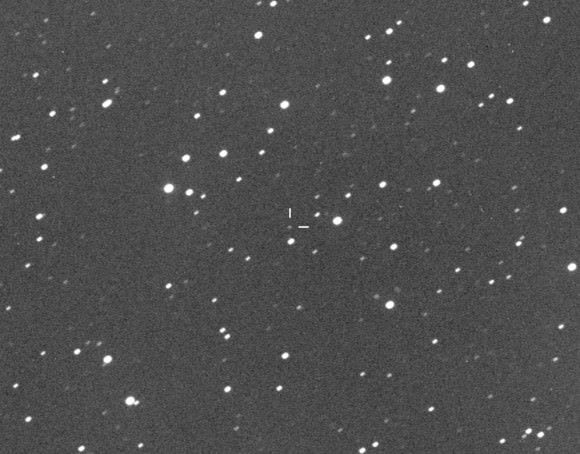
UPDATE Oct. 30th — I’ve created several detailed maps to help you track TB145.
The close approach of such of TB145 will make for great science opportunities, too. Several optical observatories and the radar capabilities of the agency’s Deep Space Network at Goldstone, California will be tracking this flying mountain as will many amateur astronomers. The 110-foot (34-meter) Goldstone antenna will ping the asteroid with radio waves; the returning echoes will be collected by dishes in West Virginia and Puerto Rico and used to construct images showing the object’s surface features, shape and dimensions. NASA scientists hope to obtain radar images of the asteroid as fine as about 7 feet (2 meters) per pixel.
“The close approach of 2015 TB145 at about 1.3 times the distance of the moon’s orbit, coupled with its size, suggests it will be one of the best asteroids for radar imaging we’ll see for several years,” said Lance Benner, of JPL, who leads NASA’s asteroid radar research program. “We plan to test a new capability to obtain radar images with two-meter resolution for the first time and hope to see unprecedented levels of detail.”
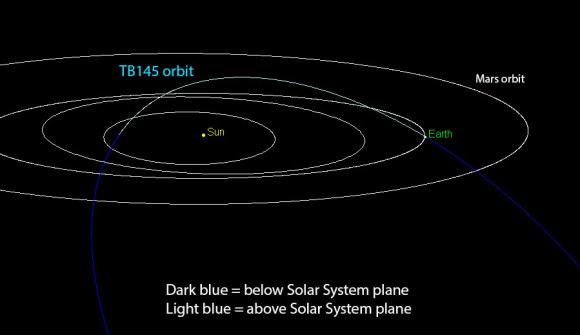
Astronomers first nabbed asteroid 2015 TB145 on Oct. 10, 2015, using the University of Hawaii’s Pan-STARRS-1 (Panoramic Survey Telescope and Rapid Response System) telescope atop Mt. Haleakala in Maui. According to the catalog of near-Earth objects kept by the Minor Planet Center, this is the closest currently known approach by an object this large until asteroid 1999 AN10 (about 2,600 feet or 800-m in size) zips by at about 1 lunar distance in August 2027.
The gravitational influence of the asteroid is so small it will have no detectable effect on the Moon or anything here on Earth, including our planet’s tides or tectonic plates. But the planet will certainly have an effect on the asteroid. Earth’s gravity will deflect TB145’s path during the close approach, making it tricky this far out to create an accurate map of its flight across the sky. That’s why the two maps I’ve included with this article are only approximate. As we get closer to Halloween, further refinements in the asteroid’s orbit will allow for more accurate path-making.
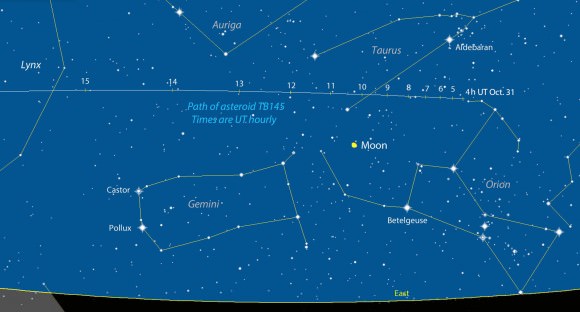
Because the asteroid passes so near Earth, parallax will shift its path north or south up to 1/2°. Parallax is the apparent shift in an object’s position against the more distant background stars depending on the observer’s location on Earth. You can see how parallax works using your eyes and a finger. Stick your arm straight out in front of you and hold up your index finger. Open and close your right and then your left eye in a back and forth blinking pattern and watch your finger jump back and forth across the more distant background. Each eye sees the thumb from a slightly different perspective, causing it to shift position against the distant scene.
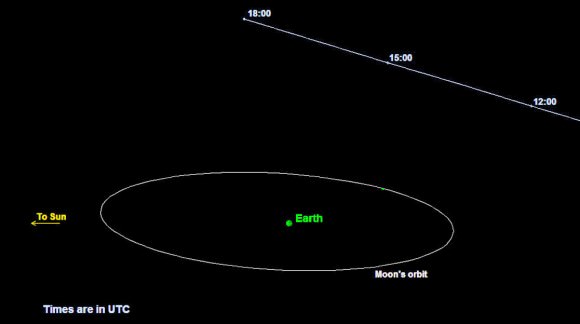
This happens all the time with the Moon. You might see it conjunct with a bright planet where skywatchers on the opposite side of the planet see an occultation. That’s why it’s best to make your own map of TB145’s wild ride across the sky. When closest to Earth, the asteroid will cover a Full Moon diameter about every 3 minutes as it tears by us at 22 miles per second (35 km/sec). Without a good map, it’ll get away from you.
Method #1: Using Stellarium
Download the free sky-plotting program Stellarium. Once you’ve set your location, either hit F2 or click on the Configuration icon in the lower left corner of your screen. Now select the Plugins tab then Solar System Editor. Click on Configure at the bottom of the tab, choose Solar System and click Import orbital elements in MPC format.
Next, select the Asteroids option and then from the bookmarks list, choose MPCORB: near-Earth asteroids (NEAs) and then Get orbital elements. Allow the list — a very large one — to load then scroll through it until you find 2015 TD145 and put a check mark in the box. Then click Add objects.
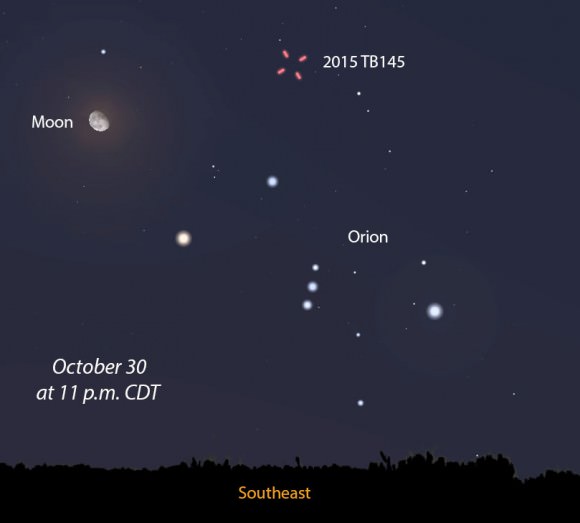
Still with me? OK, close the Solar System editor and press F3 or select the magnifying glass icon in the lower left corner of your screen, then type in the asteroid’s name exactly as 2015 TD145. Hit enter and you’ll see a set of rotating red crosshairs. Bingo! This where the asteroid will be at the time you chose. You can adjust your magnitude range, field of view and even download additional files of fainter stars and deep sky objects. Unfortunately, Stellarium can’t draw an arc showing TB145’s changing position with time. Cross your fingers that appears in the next iteration.
Method #2: Download up-to-date orbital elements into your sky-charting program
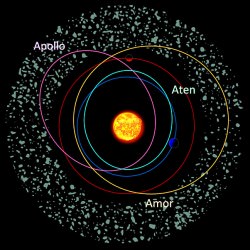
Let’s say you already have a sky-charting program like Guide, Dance of the Planets, MegaStar or Starry Night. Go to the Minor Planet &Comet Ephemeris Service and type in 2015 TB145 in the big, blank box. Next, scroll down and select your program from the list and click on Get Ephemerides/HTML page. Save the file of orbital elements that pops up and place into the appropriate folder in your program. Open your program, select 2015 TB145 and make a chart!
Method #3: Manually input orbital elements into your program
You can also go to JPL’s Horizons site for the very latest orbital elements you can manually input in your program. 2015 TB145 is expected to be as bright as magnitude +10.1 (no problem in a 4.5-inch scope) but that occurs during the afternoon for the Americas. The Middle East and Asia are the place to be for closest approach. Peak brightness over the U.S. will occur before dawn on Halloween, so you can begin observation around 11 p.m. local time Friday evening October 30 when Orion comes up in the east. The asteroid starts shines at around magnitude +11-11.5 that evening and brightens overnight to around +10.3-10.5 before dawn for the Americas.
A word about tracking fast-moving asteroids. I’ve found that the best way to catch sight of one is to “camp” at the place they’ll pass at a certain time. Say you want to see TB145 at 1:15 a.m. October 31. Make a chart that shows its position every 15 minutes. Five minutes before it arrives at the 1:15 a.m. spot, point your telescope there and wait for a “moving star” to enter the field of view. If you don’t see it right way, wait a few minutes and pan around to the north and south of the location. By the way, the asteroid will pass less than a degree northwest of the Crab Nebula (M1) in Taurus around 10:30 UT (5:30 a.m. CDT).
Be aware that the bright, waning gibbous Moon will be within 10° of the asteroid when it’s best visible in the Americas. While this will make observing the asteroid more challenging, don’t let it stop you from trying. If bad weather gets in the way, Gianluca Masi has you covered. He’ll live-stream the flyby on his Virtual Telescope site beginning at 0:00 UT (7 p.m CDT) on October 31st.
One way or another, we’ll all have a shot at seeing the Great Pumpkin asteroid this Halloween.
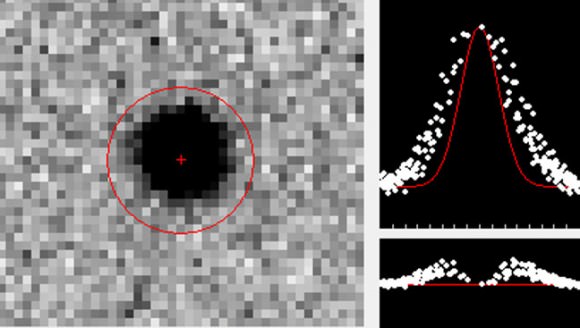
UPDATE Oct. 27, 2015: There’s been some discussion about TB145’s orbit resembling that of a comet along with speculation it might be a dead or dormant comet. Amateur and professional astronomers have been watching it closely, looking for hints of activity such as a fuzzy coma. So far, photos show the asteroid as completely stellar.
I also wanted to update you on its visibility. Those with 10-inch or larger telescopes can begin looking for the object Thursday night Oct. 29th when it reaches magnitude +13.5. The following night it leaps to +11.5 with a peak brightness of +10.0 occurring around 14:00 UT (9 a.m. CDT) on Halloween. TB145 fades rapidly thereafter – down to 15th magnitude just 8 hours later.


Am assuming that this asteroid like most, is ostensibly a carbonaceous chondrite? Will anybody be doing spectroscopy on this object? I see lots of articles in a Google search, but no mention of an elemental analysis being done. Then again, I didn’t look more than a couple pages in…
It will be very interesting if this object like so many other bodies recently surveyed, is a contact binary OR have a smaller orbital companion. Ladies and gentlemen, start your data collecting engines!
Aqua,
I’ve not seen a type for this asteroid probably since it was so recently discovered. Lots of unknowns here yet. Since it’ll be watched by professionals and amateurs, I hope someone will obtain a spectrum.
As an afterthought I realized, of course someone will do that.. maybe even SOPHIA? Just wondering if you’d heard about any other resources being activated?
Closest approach time has been revised slightly. It is now 17:00 UT.
Thanks Gerald! And I suspect it might be revised again slightly.